Are you constantly battling the chaos of clutter in your own home and feeling overwhelmed? The struggle is real, and the toll on one’s well-being is undeniable. When you walk into your living space, hoping for peace, only to be greeted by a sea of disarray. The issue is obvious: clutter has infiltrated your sanctuary, causing increased stress, a scattered mind, and an overall sense of unease.
Decluttering turns into more than just a solution when it comes to creating a peaceful living space. Just imagine living in a house where all of the rooms exude calm and where the burden of extraneous possessions has been removed, letting you breathe easy. Not only is a clutter-free home more organized, but it also serves as a haven for your mental and emotional health. Upon completing the decluttering process, you’ll experience a general sense of calm, increased focus, and decreased stress. Let’s explore the benefits of living in a clutter-free haven and the transformative power of taking back your space.
Benefits of a Clutter-Free Home
The rewards of decluttering extend far beyond the visual appeal of an organized space. A clutter-free home becomes a catalyst for a myriad of positive changes in our lives. Here’s where the magic happens:
- Reduced Stress: Uncluttered surroundings translate to an unburdened mind. The mere act of eliminating excess items can alleviate stress, creating a serene atmosphere that promotes relaxation.
- Improved Focus: A clutter-free environment allows for better concentration. With distractions minimised, our ability to focus on tasks is enhanced, leading to increased productivity and a sense of accomplishment.
- Enhanced Overall Well-Being: The impact of decluttering extends to our well-being. A tidy home promotes better physical health, as it becomes easier to navigate and maintain cleanliness. Additionally, the psychological benefits of a clutter-free space contribute to improved mental health and emotional well-being.
Let us seize the opportunity to not only transform our living spaces but also to create an environment that promotes inner peace and well-being. Join us as we look at practical ways to declutter each room and create a more harmonious and rejuvenating home.
A cluttered room is a cluttered mind. Clear your space, and you'll find clarity in every aspect of your life.
Declutter Room-by-Room Guide: Transform Your Space with Practical Ideas
Here are the most creative and practical tips for organizing every room in your house:
1. Entryway
The entryway is the front door to your home, and it sets the tone for what lies beyond. A clean and well-organized entryway not only welcomes you and your guests but also establishes a sense of order from the moment you walk in. Let’s take a look at a step-by-step guide for transforming your entryway into a functional and stylish space.
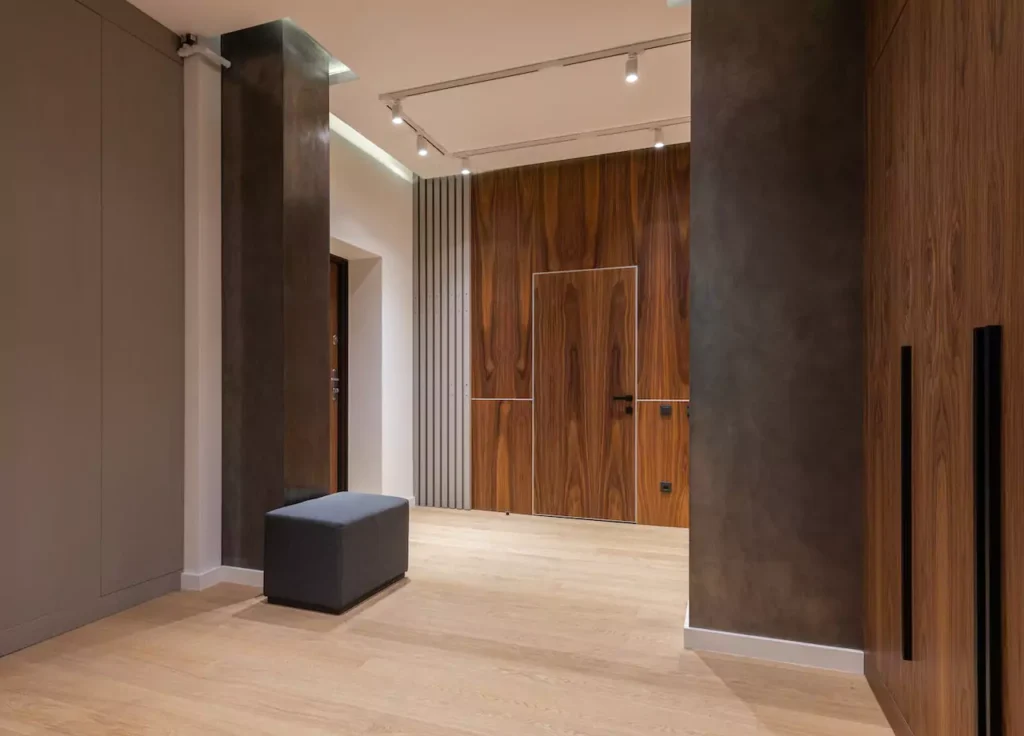

Clear out Unnecessary Items
The first step in decluttering your entryway is to bid farewell to unnecessary items that tend to accumulate over time. Assess the area and identify items that don’t contribute to the functionality or aesthetics of the space. Whether it’s old mail, mismatched shoes, or out-of-season accessories, decluttering sets the stage for a more spacious and inviting entryway.
Dos
Don’ts
Organize Shoes, Coats, and Accessories
With unnecessary items removed, the next step is to organize the essentials—shoes, coats, and accessories. Invest in storage solutions that cater specifically to these items. Shoe racks, coat hooks, and bins can be instrumental in maintaining order. Consider the frequency of use when deciding on the placement of each item to ensure convenience and accessibility.
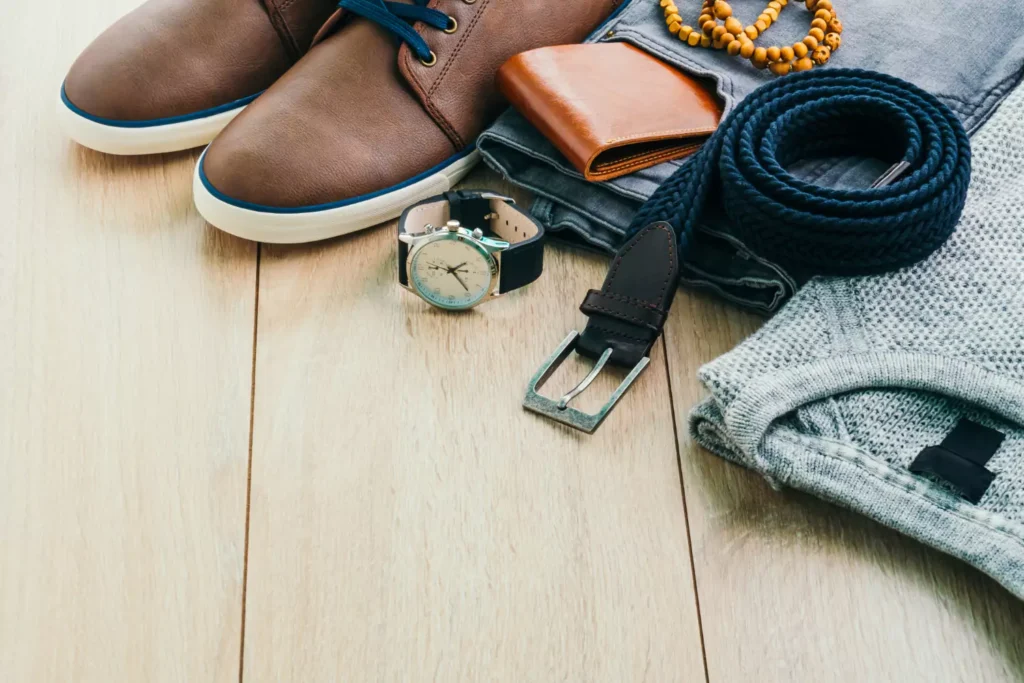

Dos
Don’ts
Consider Adding a Stylish Entryway Organizer:
Consider adding a stylish entryway organizer to improve the functionality and aesthetics of your entryway. This piece not only serves a functional purpose by providing designated areas for keys, mail, and other necessities, but it also adds to the overall visual appeal of the space. Choose an organizer that complements the style of your home and adds a personal touch.
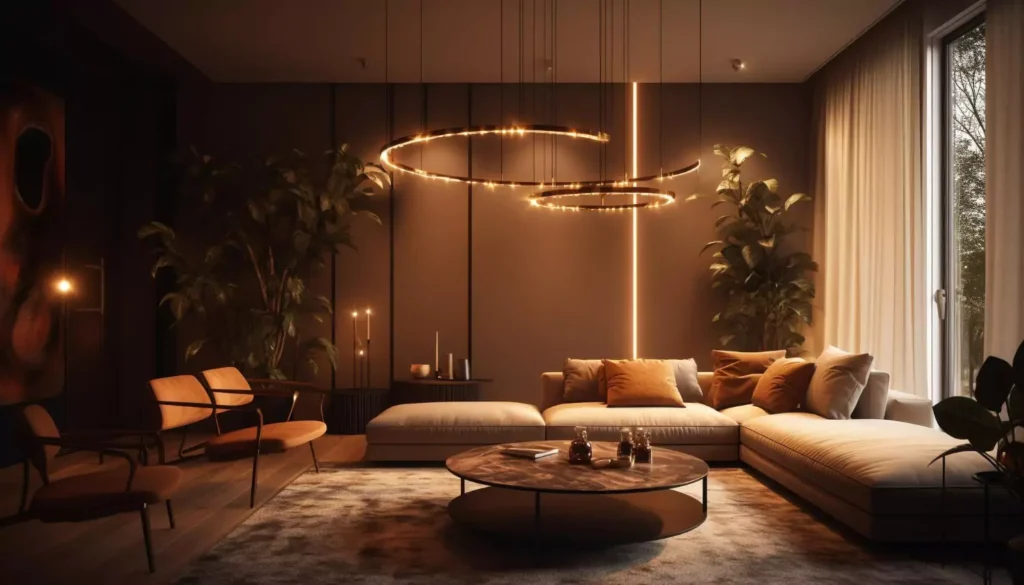

Dos
Don’ts
“Simplicity is the ultimate sophistication. Declutter your surroundings to reveal the elegance within.”
– Leonardo da Vinci
2. Living Room
The living room is the gathering place for friends and family and the centre of your house. Spending a lot of time there with loved ones and attending small gatherings is customary. This area needs to be properly decluttered and organized if its comfort potential is to be fully realized. To make your living room a peaceful sanctuary, adhere to this step-by-step tutorial.
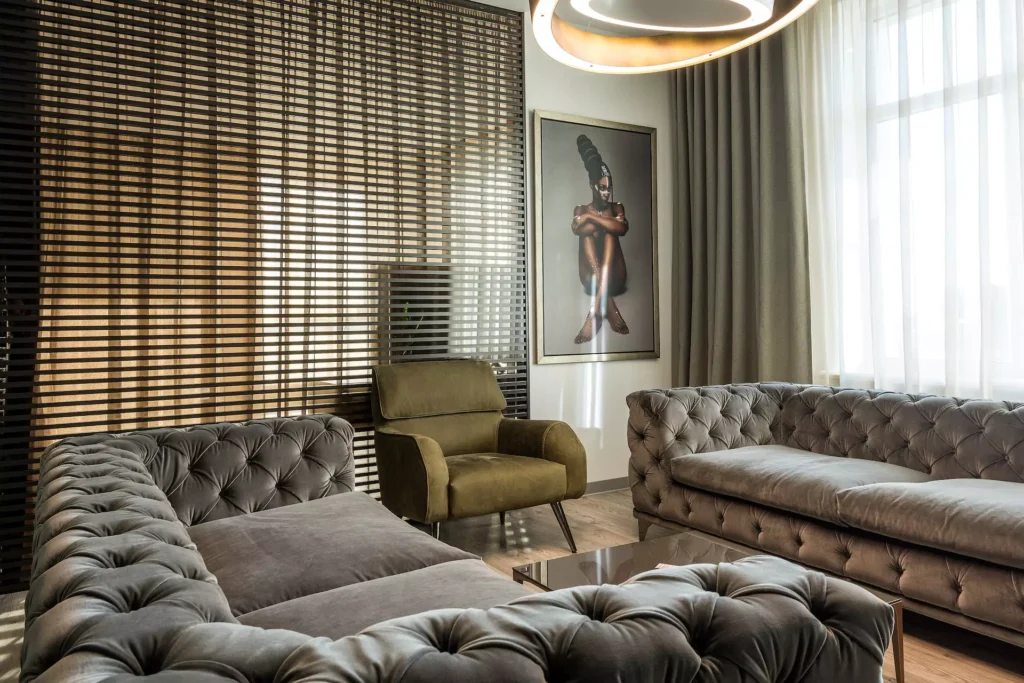

Streamline Furniture
Begin the decluttering process by assessing your furniture. Remove excess pieces that may overcrowd the space. Consider the functionality of each item – if it doesn’t serve a purpose or enhance the overall aesthetics, it might be time to part ways. A minimalist approach to furniture not only opens up the room but also creates an airier, more inviting atmosphere.
Dos
Don’ts
Organize Entertainment Centers and Shelves
Clutter frequently gathers in your entertainment centres and bookcases. Examine any books, DVDs, or other random objects that might have ended up on these surfaces with critical eyes. Only things that add to the room’s functionality and ambience should be kept. Keep things looking tidy and put together by using fashionable storage options like baskets or ornamental boxes.
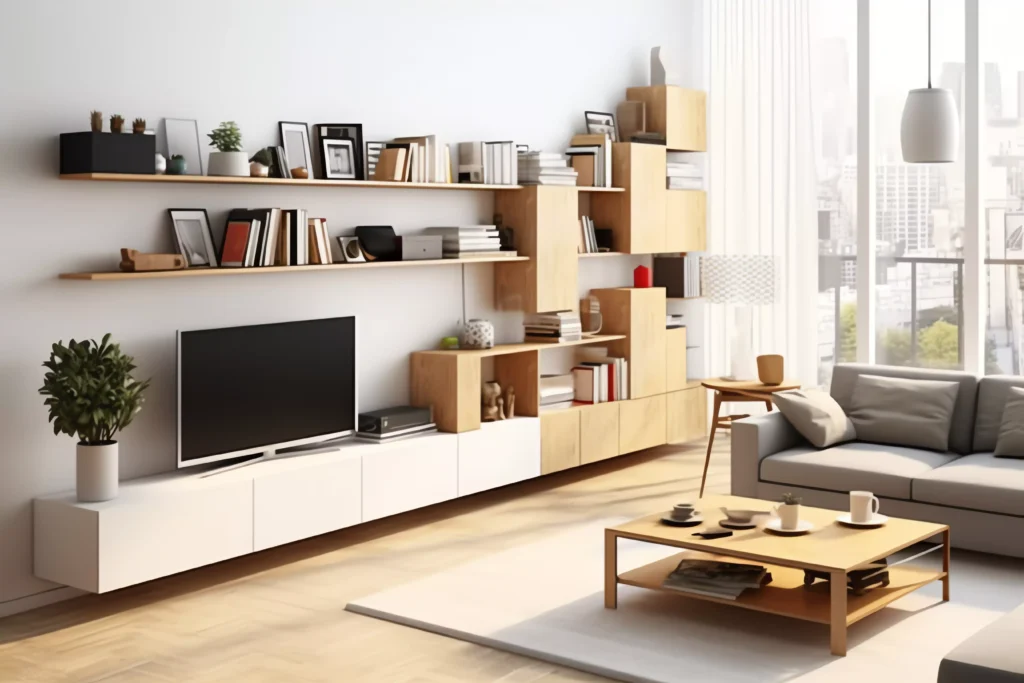

Dos
Don’ts
Create Designated Zones
Make your living room a versatile space by creating distinct zones for various activities. Design a cosy corner for reading with a comfortable chair and adequate lighting. Arrange seating for optimal TV viewing, ensuring everyone has a clear line of sight. By defining these zones, you not only enhance functionality but also contribute to an organized and purposeful living space.


Dos
Don’ts
3. Kitchen
The kitchen, often considered the heart of the home, is a space where functionality and efficiency play a crucial role. Decluttering this area can significantly enhance your cooking experience and make meal preparation a breeze. Let’s delve into a detailed guide on streamlining your kitchen for optimal efficiency.
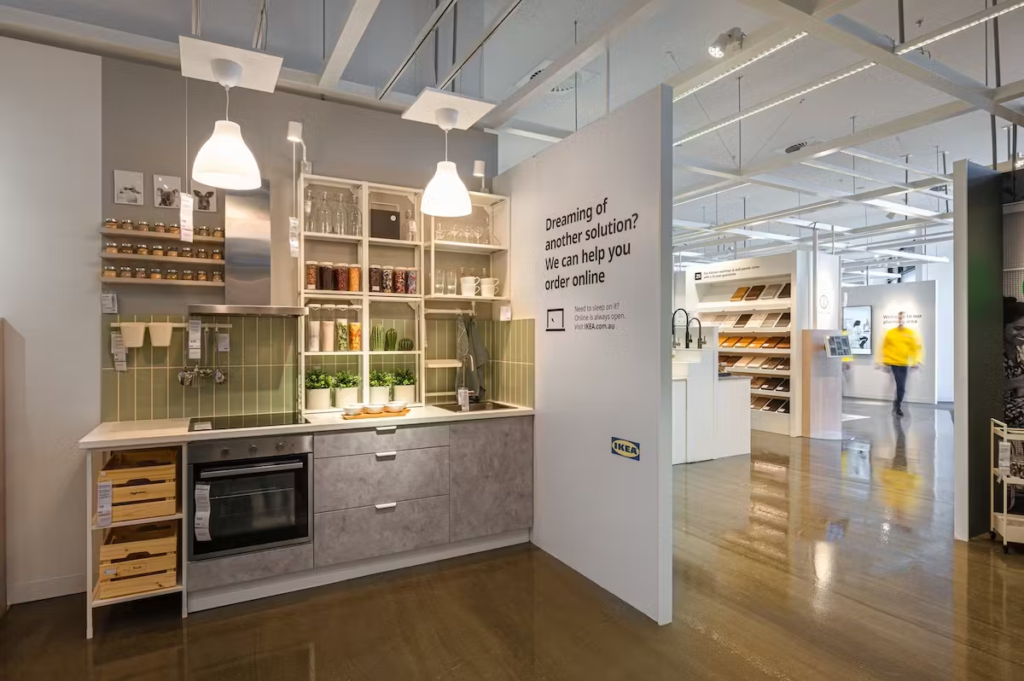

Declutter Countertops
One of the quickest ways to create a more spacious and organized kitchen is by decluttering countertops. Begin by identifying and stowing away seldom-used appliances. While that fancy blender or coffee maker may be fantastic, if it’s not a daily necessity, consider finding a designated storage spot to keep your countertops clutter-free.
Dos
Don’ts
Organize Pantry Items
A well-organized pantry not only makes meal planning easier but also prevents the accumulation of expired goods. Begin by categorizing pantry items and discarding anything past its prime. Invest in storage containers or baskets to keep similar items together, creating a visually appealing and functional pantry space.
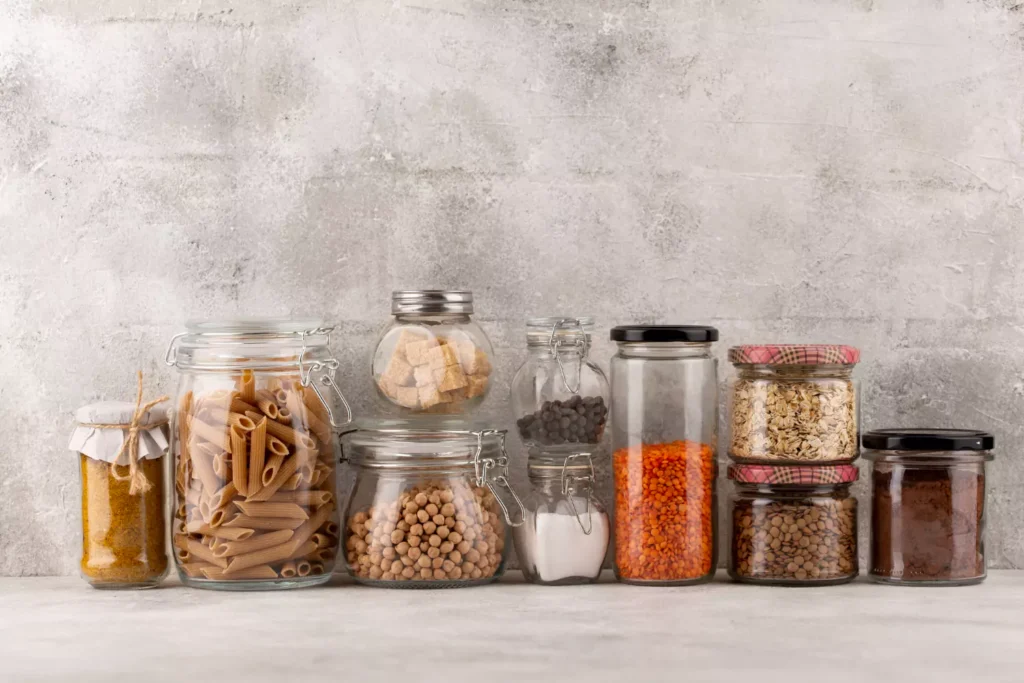

Dos
Don’ts
Evaluate Kitchen Tools and Utensils
The allure of fancy kitchen gadgets is undeniable, but an excess of tools can lead to clutter and confusion. Take the time to evaluate your collection of kitchen tools and utensils, keeping only the essentials that you regularly use. This not only declutters your drawers but also makes meal preparation more efficient.
Dos
Don’ts
4. Bedroom
Your bedroom should be a sanctuary, a place where you can unwind and rejuvenate. To achieve this, it’s essential to declutter effectively, focusing on key areas like bedside tables, closets, and storage solutions. Let’s dive into the details of transforming your bedroom into a serene retreat.
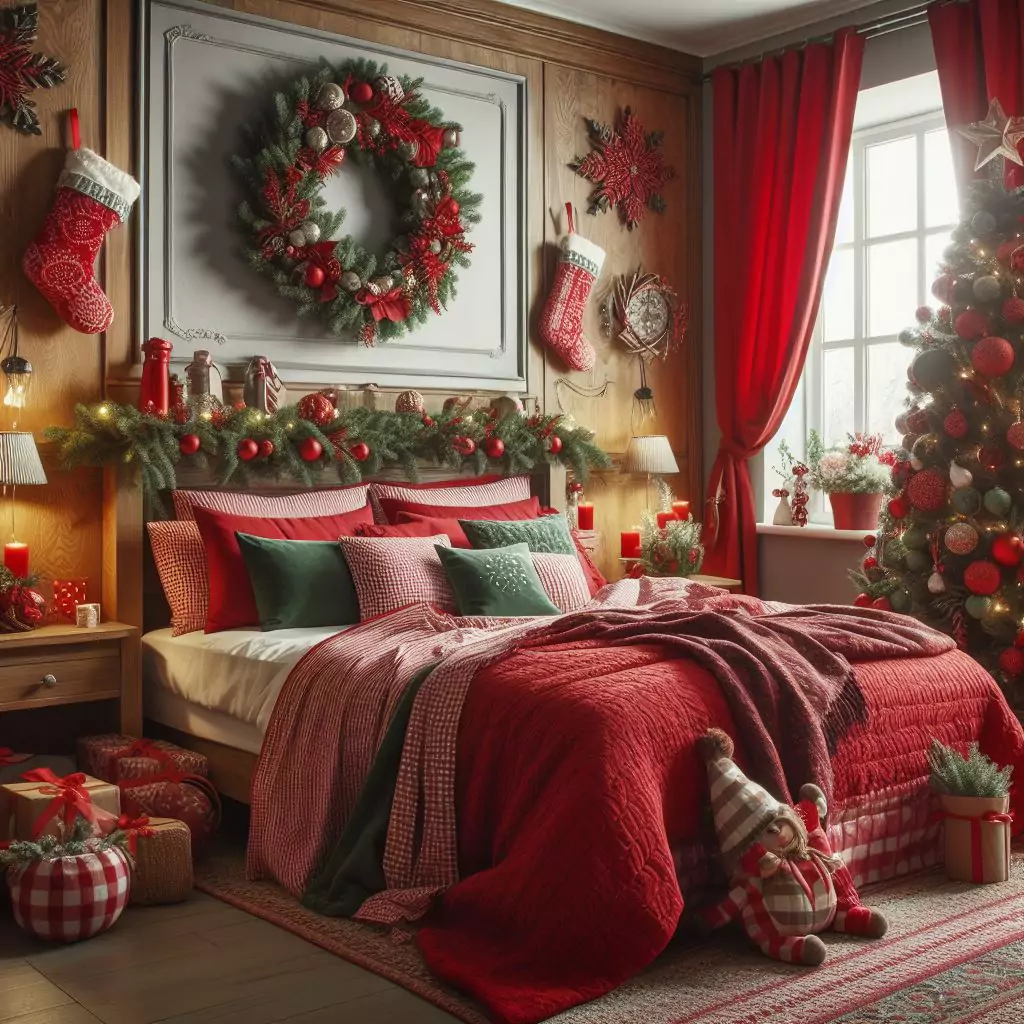

Declutter Bedside Tables
Your bedside tables play a crucial role in creating a calming atmosphere. Begin by assessing the items on these surfaces and ask yourself, “Does this contribute to relaxation?” Remove anything that doesn’t align with the tranquil vibe you want to cultivate.
Dos
Don’ts
Organize the Closet
Unused clothes and accessories build up in the closet over time, causing it to frequently be a disorganized mess. By following these decluttering guidelines, you can turn your closet into a tidy retreat.
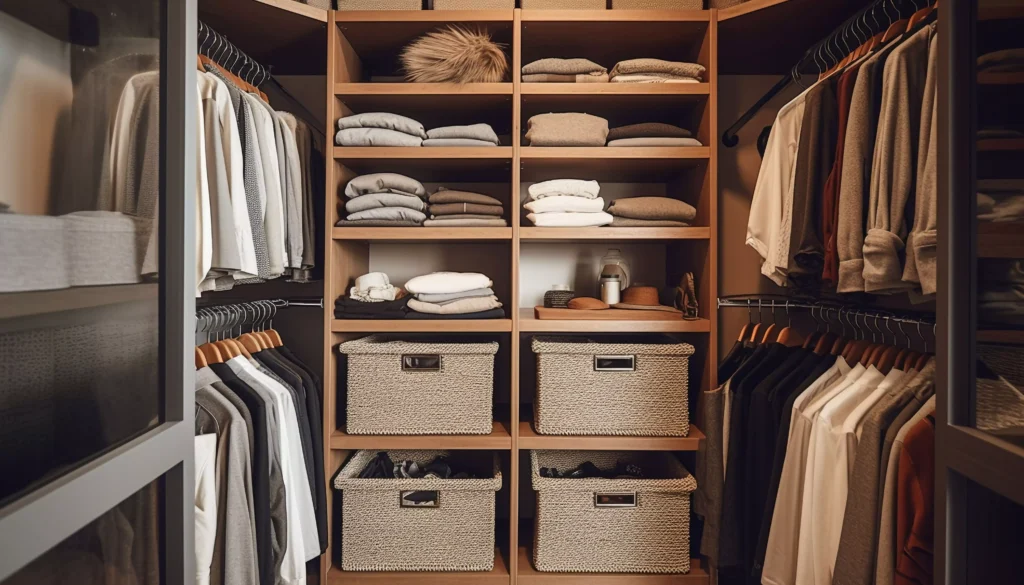

Dos
Don’ts
Consider Storage Solutions
Maximize space in your bedroom by exploring storage solutions, especially under-bed containers for seasonal items. This not only declutters your immediate surroundings but also ensures a streamlined and organized space.
Dos
Don’ts
5. Bathroom
When it comes to organizing, the bathroom—which is often regarded as a haven for self-care—deserves particular consideration. Not only does a clutter-free bathroom increase functionality, but it also creates a calm, spa-like atmosphere. Let’s get into the details of restoring this vital area.
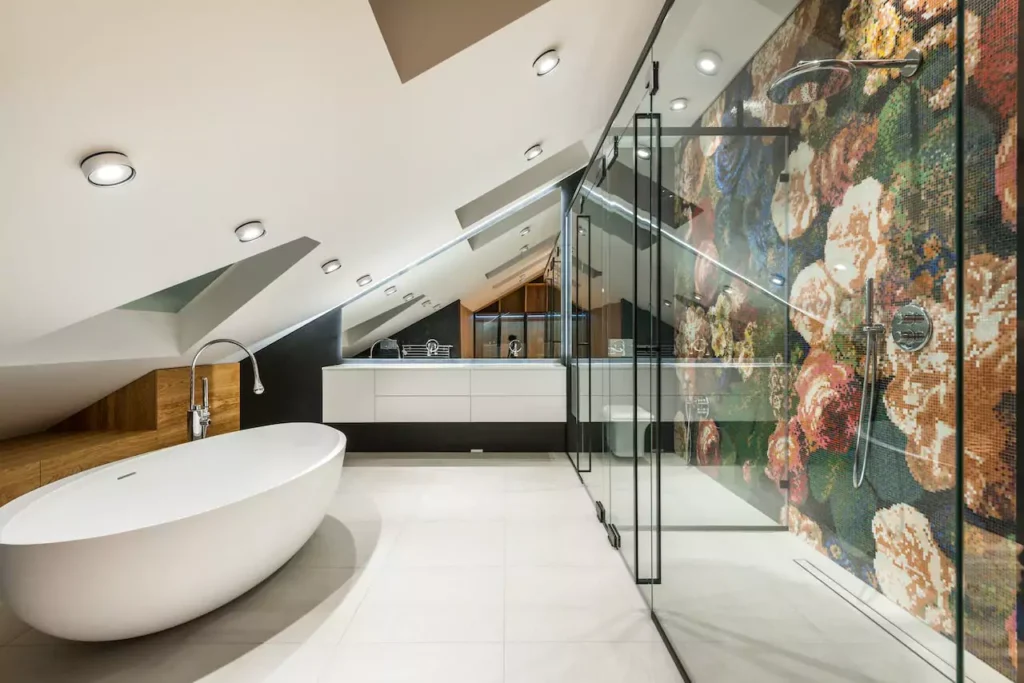

Discard Expired Toiletries and Medications: Out with the Old
Begin your decluttering by taking an inventory of your toiletries and medications. Check expiration dates carefully and discard any products that have outlived their usefulness. This step not only frees up space but also ensures that you’re using safe and effective products.
Organize Cabinets and Drawers: A Place for Everything
Cabinets and drawers are the unsung heroes of bathroom organization. Invest in clear storage containers or drawer organizers to maximize these spaces. Categorize items such as skincare products, hair tools, and cosmetics. This not only makes items easy to find but also prevents a chaotic jumble of products.
Dos
Don’ts
Streamline Towels and Linens: Quality Over Quantity
Linens and towels make a big difference in a bathroom’s appearance and usability. Evaluate your collection and reduce it to the necessities. Only gently used, well-maintained towels and linens that fulfil a functional need should be kept. To reduce waste, think about giving gently used items as donations.
Dos
Don’ts
6. Home Office
Working from home has become the new normal for many, and having an organized and clutter-free home office is essential for fostering productivity. Let’s dive into some actionable steps to transform your home office into a focused and efficient workspace.
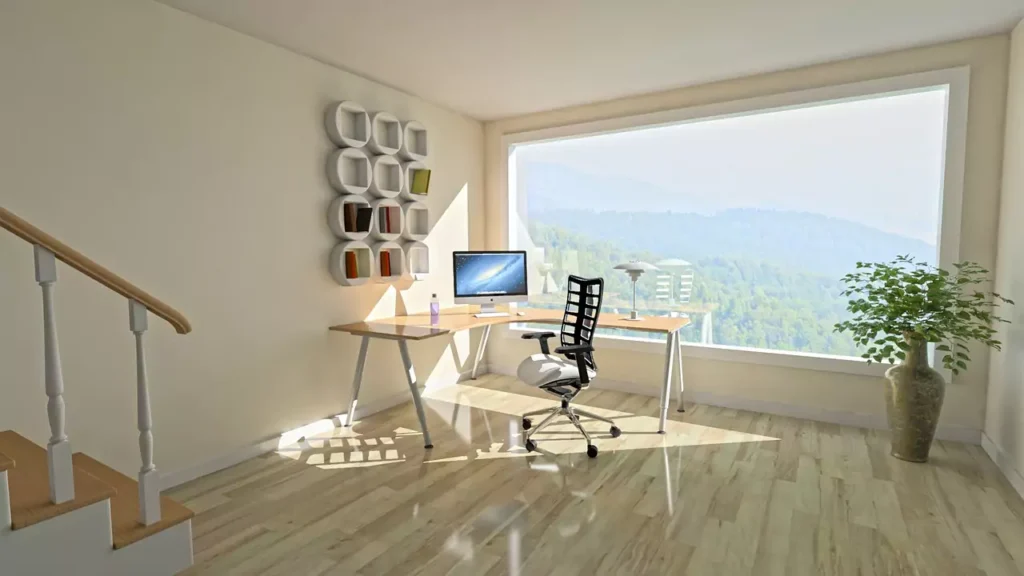

Clear the Desk: Streamline Your Work Surface
The first step in creating a productive home office is to clear the desk of unnecessary items. A cluttered desk can lead to distractions and hinder your ability to focus. Take a moment to assess the items on your desk and keep only the essentials. Remove old paperwork, random office supplies, and any items that don’t directly contribute to your daily tasks.
Dos
Don’ts
Organize Cables and Electronic Devices: Tame the Tangled Web
Cables and electronic devices can quickly become a source of chaos in any workspace. Tangled cords not only look messy but can also lead to confusion and frustration. Take the time to organize your cables and electronic devices for a streamlined and visually appealing home office.
Dos
Don’ts
Implement Filing Systems: Conquer Paperwork Clutter
If not managed properly, paperwork can quickly overwhelm a home office. Implementing a filing system is critical for organizing and making important documents easily accessible. Say farewell to frantic searches for that elusive contract or receipt.
Dos
Don’ts
7. Dining Room
Many homes are built around the dining room, which serves as a gathering place for families to eat together and make enduring memories. Decluttering and creating a welcoming atmosphere are essential if you want to make sure this room radiates warmth and comfort. This is your all-inclusive guide to creating a warm and inviting gathering place in your dining room.
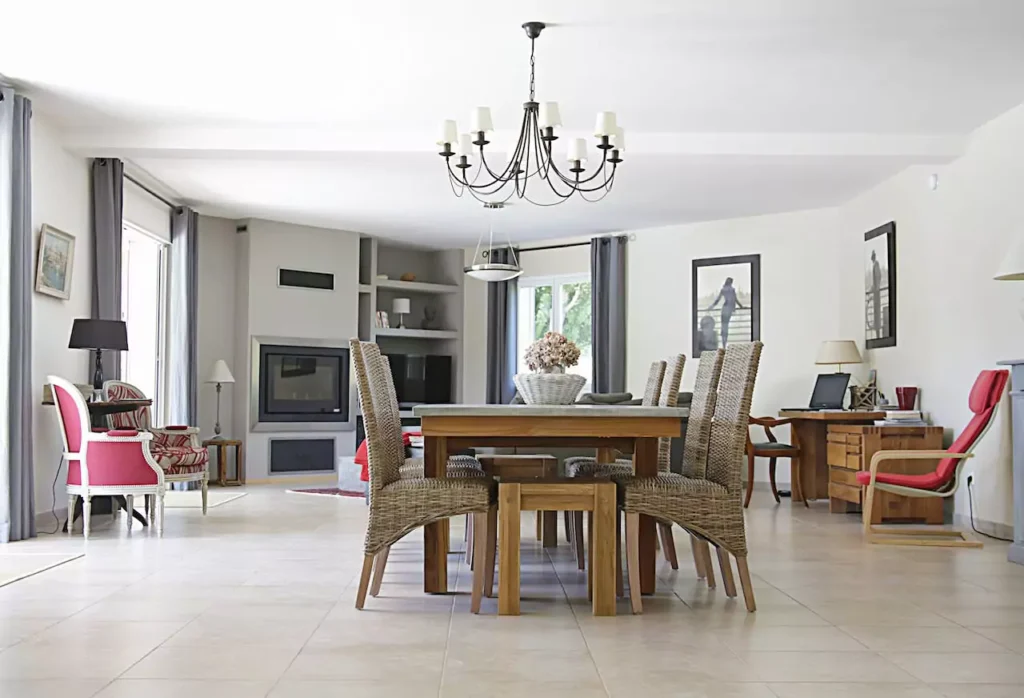

Removing Excess Decor: Less is More
A clutter-free dining room starts with a simple decorating scheme. Remove any extraneous decor that is crowding surfaces or overpowering the space. Choose a minimalist approach to allow key pieces to stand out. To draw attention without creating visual chaos, consider a focal point, such as a statement light fixture or a piece of art.
Dos
Don’ts
Organizing Dining Essentials and Tableware: Efficiency is Key
A well-organized dining area enhances functionality and elevates the dining experience. Streamline your tableware, ensuring easy access to essentials. Consider organizing items by frequency of use, keeping everyday items easily reachable. Invest in stylish yet functional storage solutions, such as a buffet or a sideboard, to neatly stow away dining accessories.
Dos
Don’ts
Decluttering Non-Dining-Related Items: Focus on Purpose
The dining room should be devoted to its primary purpose—dining. Assess the room for any non-dining-related items that may have made their way in. Consider relocating items that do not add to the dining experience to maintain a purposeful and intentional atmosphere.
Dos
Don’ts
8. Kids’ Room: Foster Creativity and Order
This is the lively part of the house that is the kids’ room, where imagination knows no bounds! While it is a place for creativity to flourish, it can also become a place of beauty to beasts if not properly organized. In this part, we’ll look at how involving your children in the decluttering process not only brings order to the room but also teaches them valuable life skills.
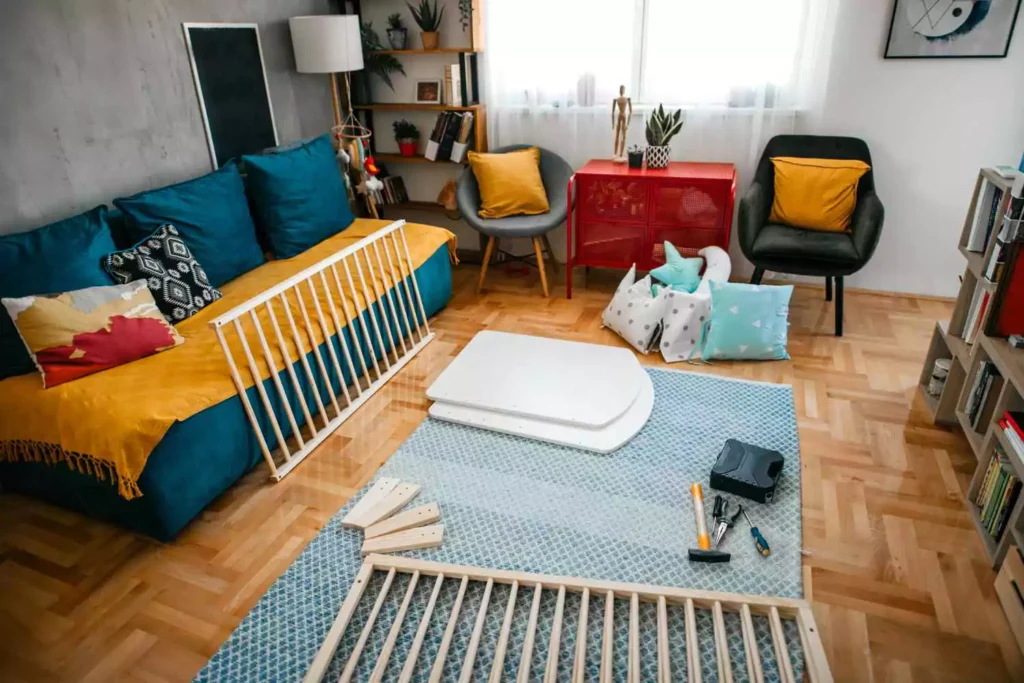

Involve Children in the Decluttering Process
Like other places, you can’t begin decluttering this space without including your kids. This is where your children’s feelings are connected. Including your children in the decluttering process is a great way to start them off with a sense of organization and responsibility. Here’s how to make it an enjoyable and instructive encounter:
Dos
Don’ts
Donate or Discard Outgrown Toys and Clothes
Children grow up faster than we anticipate, and their interests evolve along with them. Embracing change is crucial, and decluttering outgrown toys and clothes becomes a meaningful step. Here’s your roadmap:
Dos
Don’ts
Create Designated Storage Areas for Toys and School Supplies
A well-organized children’s room is essential for harmony. Creating specific spaces for toys and school supplies to be stored guarantees that everything has a place and simplifies cleanup.
Dos
Don’ts
9. Home Gym
The family, who values fitness, believes they should have a home gym. It’s not only about looks when it comes to making your workout area neat and clutter-free; it’s also about improving your motivation and productivity. Let’s get into the specifics of how to set up your home gym to provide a flawless training experience.
Declutter Exercise Equipment and Accessories
Your home gym might be home to various pieces of equipment, from dumbbells to resistance bands. The first step is to declutter. Assess each item – are you using it regularly? If not, it might be time to part ways. Donate or sell items that no longer align with your fitness routine or goals. This not only frees up physical space but also clears mental space for a focused workout.
Dos
Don’ts
Organize Workout Gear for Easy Access
Transitioning from cardio to strength training without fumbling through a jumble of equipment. Organization is essential. Invest in storage solutions like shelves, bins, or racks to keep your workout gear organized and visually appealing. Sort items logically; for example, have a section for cardio equipment, another for resistance training tools, and so on. This not only makes your routine more efficient but also makes post-workout cleanup a breeze.
Dos
Don’ts
Create a Designated Space for Yoga Mats, Weights, and Other Fitness Essentials
Weights, yoga mats, and other necessary equipment for exercise have a place of their own. This not only gives your home gym a little aesthetic appeal but also guarantees uninterrupted switches between workouts.
Dos
Don’ts
A Decluttering Checklist
It can be intimidating to start a room-by-room decluttering initiative, but don’t worry! We’ve created a checklist to help you go through every room in your house and make sure nothing is overlooked.
Entryway:
- Remove old shoes and coats.
- Organize keys and accessories.
- Consider a stylish entryway organizer.
Living Room:
- Evaluate furniture; remove excess items.
- Organize entertainment centres and shelves.
- Create designated zones for different activities.
Kitchen:
- Clear countertops of seldom-used appliances.
- Organize pantry items; discard expired goods.
- Assess kitchen tools and utensils; keep essentials.
Bedroom:
- Declutter bedside tables.
- Organize the closet; donate or discard unused clothing.
- Utilize under-bed storage for seasonal items.
Bathroom:
- Discard expired toiletries and medications.
- Organize cabinets and drawers; use storage containers.
- Streamline towels and linens.
Home Office:
- Clear the desk of unnecessary items.
- Organize cables and electronic devices.
- Implement filing systems for paperwork.
Dining Room:
- Remove excess decor for a clean atmosphere.
- Organize dining essentials and tableware.
- Declutter non-dining-related items stored in the room.
Kids’ Room:
- Involve children in the decluttering process.
- Donate or discard outgrown toys and clothes.
- Create designated storage areas for toys and school supplies.
Home Gym:
- Declutter exercise equipment and accessories.
- Organize workout gear for easy access.
- Designate space for yoga mats, weights, and fitness essentials.
Wrapping Up
In wrapping up our room-by-room decluttering approach, It’s critical to understand that a peaceful home environment promotes both physical and mental well-being. Decluttering requires constant upkeep; it’s not merely a one-time effort.
By regularly sorting through and reevaluating your possessions, you can stop clutter from developing in the future. Accept the ease and tranquillity that come with living in a clutter-free space.
We hope to hear from you soon! Comment below with your decluttering successes, difficulties, and advice. Together, let’s motivate and encourage one another to create a calmer, more orderly home. You are now starting your journey to a clutter-free haven!

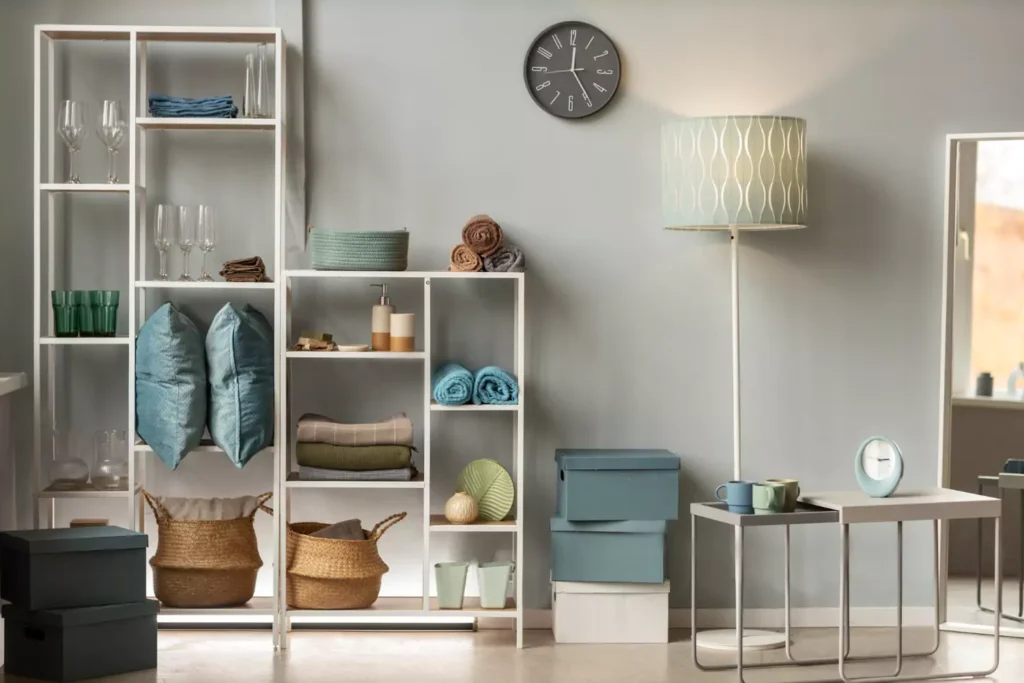
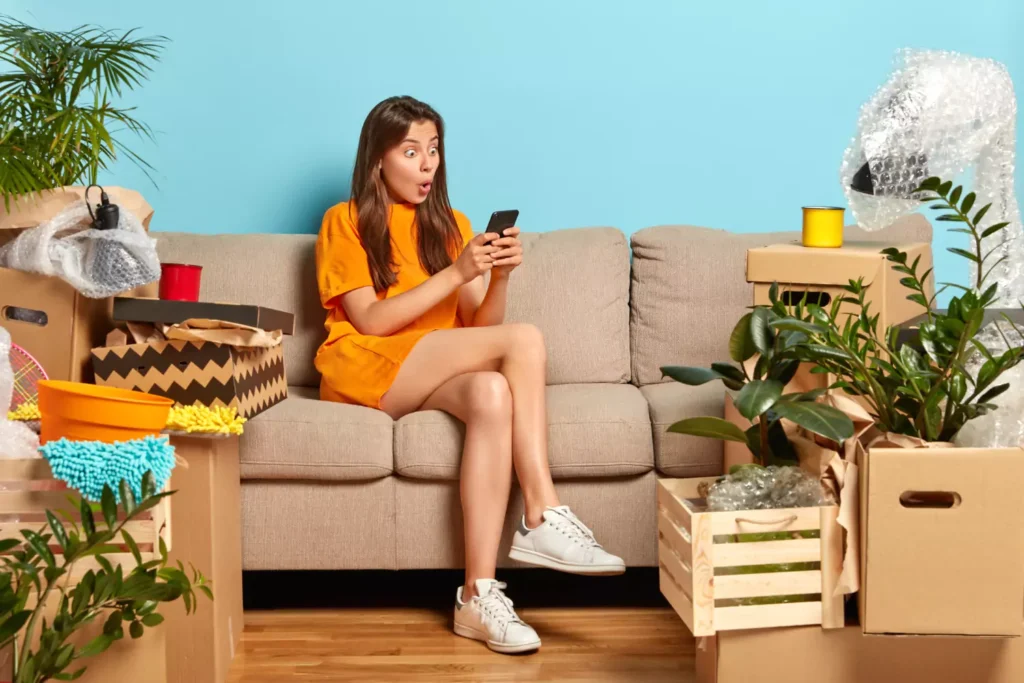
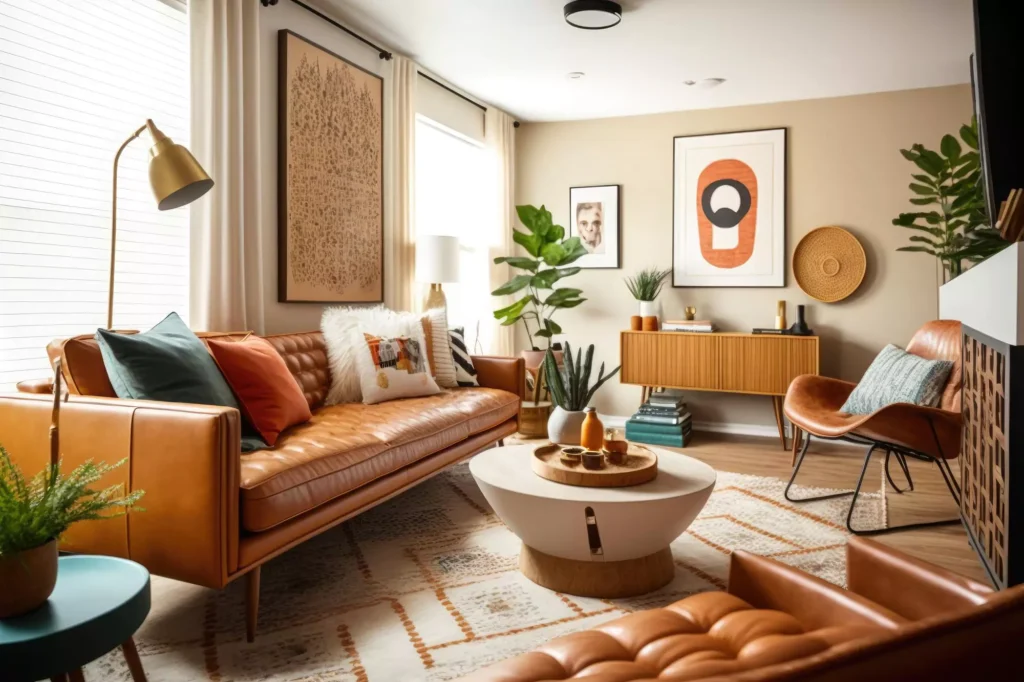
Pingback: Get Organized: Pantry Container & Label Hacks - Wow Home Shop